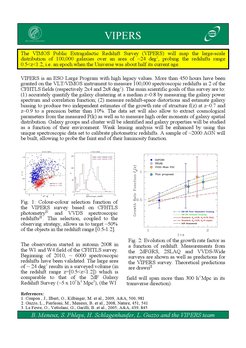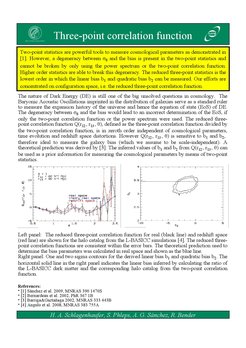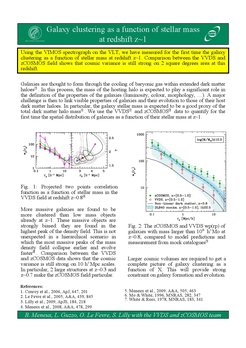Dark Energy and Large Scale Structure

About Our Recent and Future Work
Dark energy and modified gravity are two possibilities to explain the observed acceleration of the expansion of the Universe. A precise measurement of the large-scale structure of the Universe (as traced by galaxies) can be used to constrain cosmological parameters, in particular the equation-of-state parameter of dark energy, w. At the same time, measuring the growth factor of density perturbations from redshift-space distortions (which modify the sign al of the real-space clustering) can be used to disentangle dark-energy and modified-gravity models. With the advent of extremely large redshift surveys like Pan-Starrs, HETDEX, BOSS (as part of SDSS-III), EUCLID and VIPERS we will measure 2-point statistics like the power spectrum (or its Fourier transform, the correlation function) and isolate the features due to baryonic acoustic oscillations. We will also explore higher-order statistics (bi-spectrum, three-point correlation function), topological descriptors (Minkowski functionals), scaling indices and other methods to quantify structure at different redshifts, and hence be able to measure not only w, but also its possible time-dependence. However, this requires a thorough and accurate treatment of systematic effects due to both data acquisition and modeling.
Bringing together expertise from theorists and observers, and applying novel techniques like renormalised perturbation theory to the analytic modeling of the clustering statistics , we will be able to infer the value of w to an accuracy of 2 to 5% at intermediate (z~0.7) to high (z<3) redshifts (and hence investigate a possible time dependence of w), constrain the values of other cosmological parameters like the baryon mass fraction and the neutrino mass, and further put constraints on dark-energy and modified-gravity models.
Results based on already existing surveys have been obtained in the context of VVDS and zCOSMOS and Reflex 2.




















